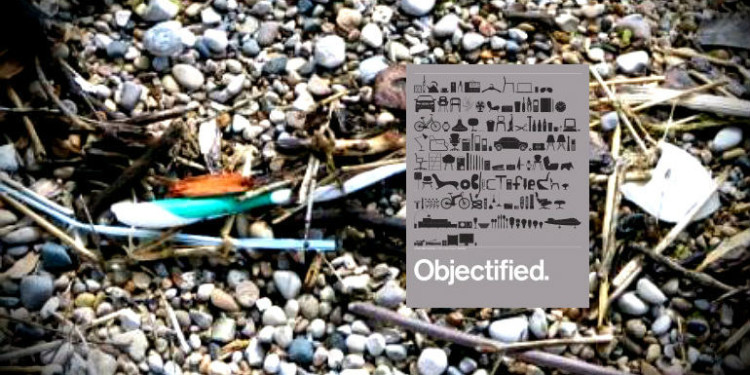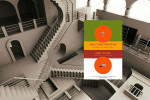Designers on Design

Objectified, a documentary created by the producers of Helvetica
, is a trip through various aspects of design activity and they types of objects we produce. Each designer’s personality, history, and perspective leads to their approach and observations about design practice. Dieter Rams is filmed at home, Jony Ive in an Apple manufacturing facility, Marc Newsom in his studio, Bill Moggridge with a GMC pickup and an early portable computer, and Karim Rashid on a stylish sofa. The film is just over an hour, but manages to cover a lot of ground: industrial design, design history, interaction design, design’s role in society, materials, manufacturing, consumption, sustainability, and business.
Some designers talk about the objects, some the process, and some the context. Common threads include reduction, awareness of context, understanding the audience, and materials.
Design is a search for form.
Everything is designed
The object testifies to the people who conceived it, thought out it, developed it, manufactured it. Every object, intentional or not, speaks to who put it there.
The film begins with small details of everyday objects, drawing our attention to the many choices that the designers and producers have made. Everything we touch and use in our daily lives has been designed and is the result of thousands of decisions and interconnected ideas.
There is a story embedded in every object. Every decision was made at some point about something.
Design means understanding people first
Our common interest is understanding people and what their needs are.
What we really need to do to design is to look at the extremes…If we understand what the extremes are, the middle will take care of itself.
To illustrate the nature of the design process from initial problem discovery through final product, the designers of the OXO grip kitchen tools describe how a friend’s arthritic wife sparked the initial design of the handle. They show the many prototypes and iterations that were involved in exploring the idea of a larger handle with flexible grip areas. A product designer describes a specific feature of a shear handle which solves the problem of cutting at a downward angle. CAD designers show how designs go from computer models to physical objects through the use of 3D printing. The designers want to “improve people’s lives without them even thinking or knowing about it.” All the discovery, research, design iteration, and production ideally results in an object that fits in your hand seamlessly.
Good design is invisible
Dieter Rams talks about all the design we do in the world, even designing nature. He is shown pruning a bonsai tree.
In my experience, users react very positively when things are clear and understandable
We have too many unnecessary things everywhere.
Naoto Fukasawa says: “it’s when you least think about it that the pen can be held most naturally.” Fukasawa looks for design that melds with people and their actions.
Design dissolving in behavior.
Rams’ design is minimalist, subscribing to the idea that good design is done when there is nothing more that can be taken away. Rams says
Good design is innovative
Good design should make a product useful
Good design is aesthetic design
Good design will make a product understandable
Good design is honest
Good design is unobtrusive
Good design is long-lived
Good design is consistent in every detail
Good design is environmentally friendly
Last but not least, good design is as little design as possible.
Rams says designers do not work in a vacuum, and are not fine artists. Designers need businesspeople.
A big definition of you as a designer is how you look at the world. A curse of what you do is you’re always looking at something and asking: “why is it like that and not like this?” And in that sense you’re constantly designing.
A lot of what we do in a product…is get design out of the way. When forms develop with that sort of reason and not just arbitrary shapes, it feels almost inevitable. It feels almost undesigned.
Jony Ive talks about Apple products in much the same way
It’s really important in a product to have a sense of the hierarchy of what’s important and what’s not important by removing those things that are all vying for your attention.
Designing and Making are intertwined
Ive shows how keyboard frames are cut from the same sheet of metal as a screen bezel. He’s in what looks like a manufacturing facility or engineering lab and talks about the efficiency and beauty of the production process with the same passion as the user experience. The interviews illustrate the link between visual design, materials, and production. There is no gap between designers and makers. Jony Ive asks: “can we do the job of those six parts with just one?” He says Apple designers spend a lot of time designing fixtures for holding metal sheets within machines in order to create parts which include critical functions of the product.
The design of this in many ways wasn’t the design of a physical thing. It was figuring out process.
Impermanence and Consumption
Ultimately my job as a designer is to look at the future. It’s not to use any frame of reference that exists.
Much of design is about creating the new and generating demand. Design, as part of the manufacture of good, is interconnected with commerce. On one end of the spectrum are “designed” objects which, by virtue of their design element, are priced at a premium. On the other end are everyday, useful objects which fit a need without emphasizing the process by which they were created. Recognition and appreciation of design is still a social signal of sophistication. The newest and latest aesthetic means that you can never catch up, there is always something newer around the corner, driven by a business need for more variety.
Purchase choices are statements to yourself about who you are made through what you buy. We amplify and reflect on our own identities in our purchase and acquisition choices.
Getting better with age
People need to demand that design performs for them.
Although there are multitudes of designed objects and environments in our world, we are still uncomfortable, confused, and frustrated by many of the things we use every day. David Kelley says “there should be a riot” because so many products are poorly designed. The result, however, is that we often blame ourselves for not understanding or not properly using things. The biggest challenge is to “design something that gets better with use.” Bill Moggridge calls it “wearing in, not wearing out.”
Sustainability
It is no longer possible for designers to ignore the implications of producing more and more stuff that sometimes we need and sometimes we don’t need.
Sustainability isn’t just using recycled materials, it involves changing the entire flow from sourcing materials, to manufacturing, packaging, shipping, and disposal. Tim Brown admits that “most of the things I have designed are probably in landfills today.” He says “we have to take into consideration…the whole complex systems in which our products exist.” The concept of cradle-to-grave is important because designers must consider what happens to a product after it is used. Thomas Overthun from IDEO describes how an IDEO-designed toothbrush was found washed up on the shore of a Pacific island.
Design for debate
We use design as a medium for to try and explore ideas, finding out things…question.
The film ends with the idea of designing scenarios for the purpose of understanding consequences of choices. Dunne and Raby note that other disciplines have “a part that is dedicated to just reflect on important issues [within the field]. Yet design, the thing is responsible for so much of the built environment around us, doesn’t do that.” They use the idea of a showroom rather than a gallery because a showroom is intended for the viewer to project the objects into their own life for consideration, use, and debate.







